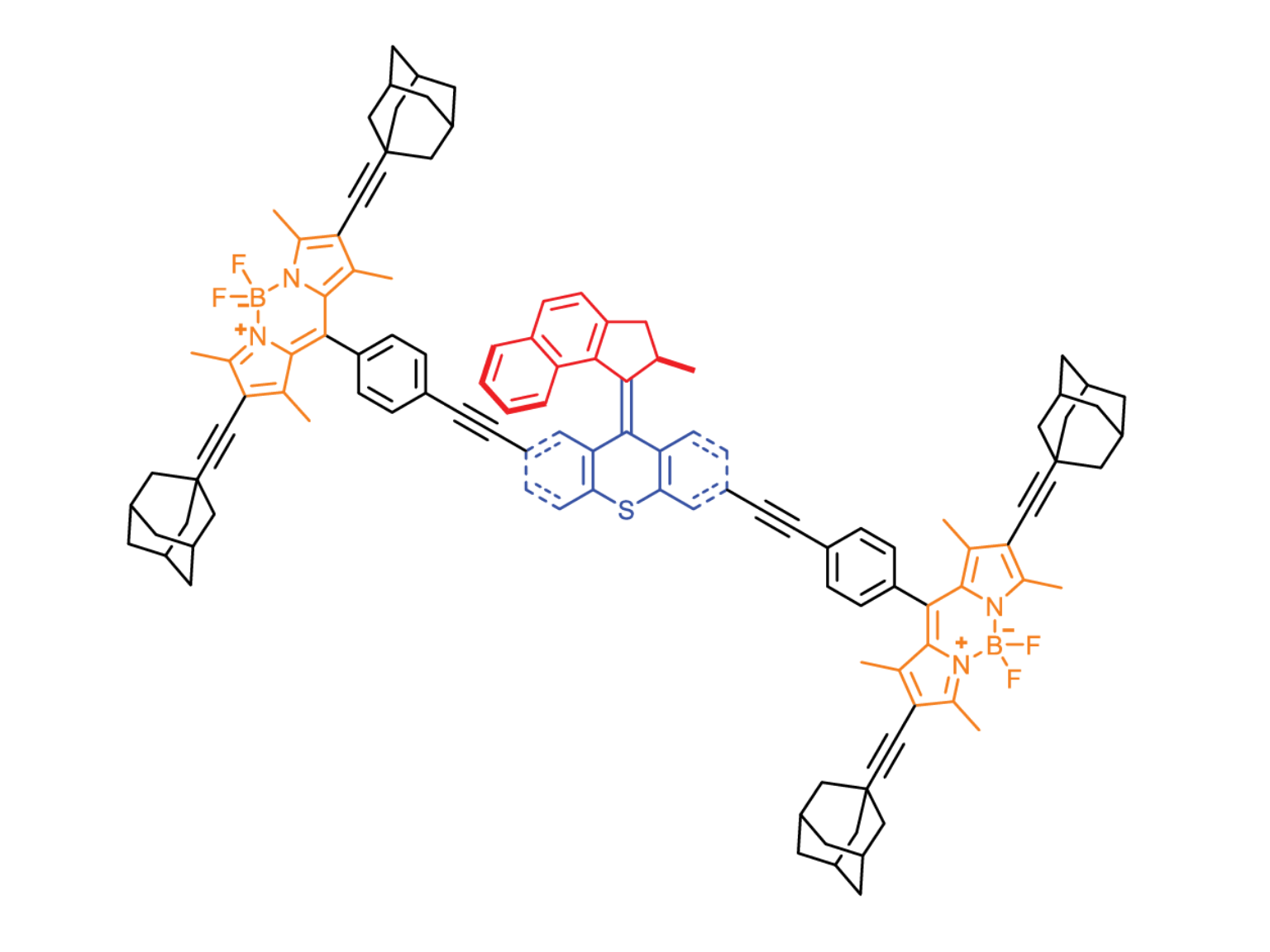LSU professor receives award from Nobel Prize laureates for contributions to the field of artificial molecular machines
July 14, 2022

Assistant Professor Víctor García-López
BATON ROUGE - Machines are defined as a physical system that uses mechanical forces and moving components to perform functional tasks. In living organisms, machines are highly organized molecular structures carrying out complex physico-chemical processes crucial for sustained life.
In fact, all motion in living organisms comes from biological molecular machines. From muscle movement to DNA replication, these biological molecular machines function with efficiency and accuracy.
Inspired by the molecular machines seen in nature, scientists began exploring the possibilities of developing their own artificial molecular machines. When three molecular machine pioneers, Sauvage, Stoddart and Feringa, won the 2016 Nobel Prize in Chemistry, the field of artificial molecular machines gained momentum.
At the LSU Chemistry Department, Assistant Professor Víctor García-López and his research group are combining organic chemistry, chemical biology, biophysics and photochemistry to design and synthesize the next generation of artificial molecular machines. According to their research, these machines can be adapted to many different purposes and forms.
“The emerging field of mechanobiology inspires us, so we are designing light-activated artificial molecular machines that produce mechanical forces and regulate a wide range of biological processes such as cell migration, differentiation, and diseases. Also, we are integrating molecular machines into artificial cells and other out-of-equilibrium materials,” said García-López.
For his outstanding contributions to the field of artificial molecular machines, García-López was selected as the first recipient of the Sauvage-Stoddart-Feringa Junior Award. This award recognizes an early career scientist who has made original and exemplary contributions to the design, synthesis, and study of artificial molecular machines. To receive the award, García-López will travel to Plön, Germany in September and give a lecture at the Mach-5 meeting in Molecular Machinery.
Through international collaborations with scientists from the U.K., Austria, Israel, and the U.S., García-López has contributed to the advancement of artificial molecular machines for materials science and medical applications.

Fluorescent motorized nanocar [Tetrahedron 2017, 73, 4864–4873].
In the 2017 Chemical & Engineering News Research of the Year issue, two research breakthroughs achieved by García-López and colleagues were highlighted in the category of artificial molecular machines: International NanoCar race winners and machines that kill cancer cells.
During the first international NanoCar race in France, the American-Austrian NanoPrix Team received top honors for the “Dipolar Racer,” a nanocar that García-López designed and synthesized. The development of the Dipolar Racer was possible thanks to the extensive research done by García-López and colleagues to control the motion of single molecules on surfaces with high precision, which can be used for future bottom-up nanofabrication.
His second recognized breakthrough in 2017 involved the discovery of artificial molecular motors driven by light to drill tiny holes into cancer cells. By irreversibly damaging the cellular membrane only when activated with light, García-López and collaborators were able to kill cancer cells within minutes, which could prevent side effects observed with common chemotherapeutic drugs.1

Molecular machines damaging the cellular membrane of cancer cells [Nature 2017, 548, 567–572].
In 2019, García-López won the Career Award at the Scientific Interface from the Burroughs Wellcome Fund for his novel idea to use molecular machines as modulators for cell function with spatiotemporal precision.
García-López and collaborators from ETH Zurich, Switzerland also developed multi-stimuli molecular grippers, which are molecules that can switch between two geometries upon stimulation and bind or release a smaller molecule.2 In 2020, the study was featured on the cover of Chemistry-A European Journal.
"These tiny yet powerful molecular machines have the potential to advance nanomedicine and develop new materials and technologies," said García-López. "Anything from photo-controlled antibiotics and chemotherapeutics to desalination devices, molecular machines could revolutionize the future of science. It's exciting to know that my group's research will contribute to the development of these applications."
To learn more about the García-López research group, visit their research page.
-
-
- García-López, V.; Chen, F.; Nilewski, L. G.; Duret, G.; Aliyan, A.; Kolomeisky, A. B.; Robinson, J. T.; Wang, G.; Pal, R.; Tour, J. M. Molecular Machines Open Cell Membranes. Nature 2017, 548, 567–572.
- García-López, V.; Zalibera, M.; Trapp, N.; Kuss-Petermann, M.; Wenger, O.; Diederich, F. Stimuli-Responsive Resorcin[4]arene Cavitands. Toward Light-Activated Molecular Grippers. Chem. Eur. J. 2020, 26, 11451–11461.
-